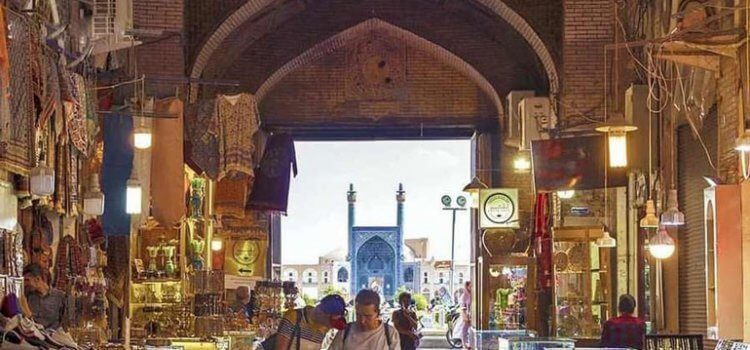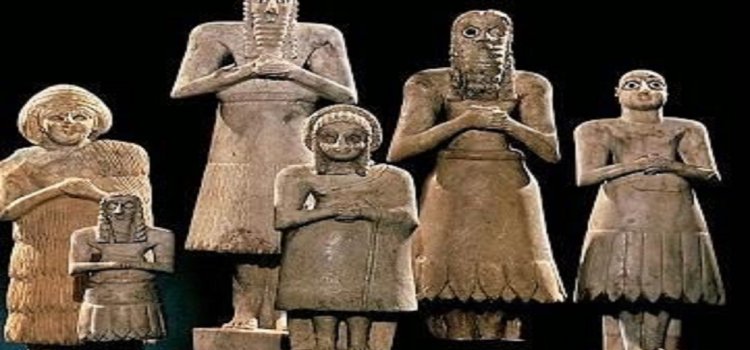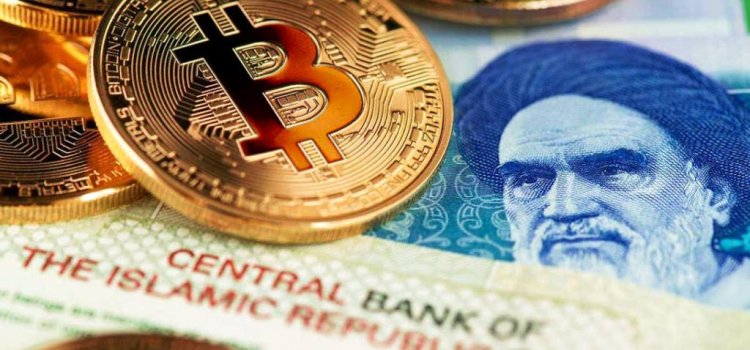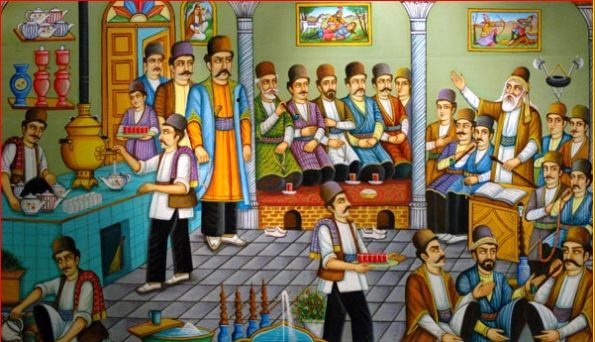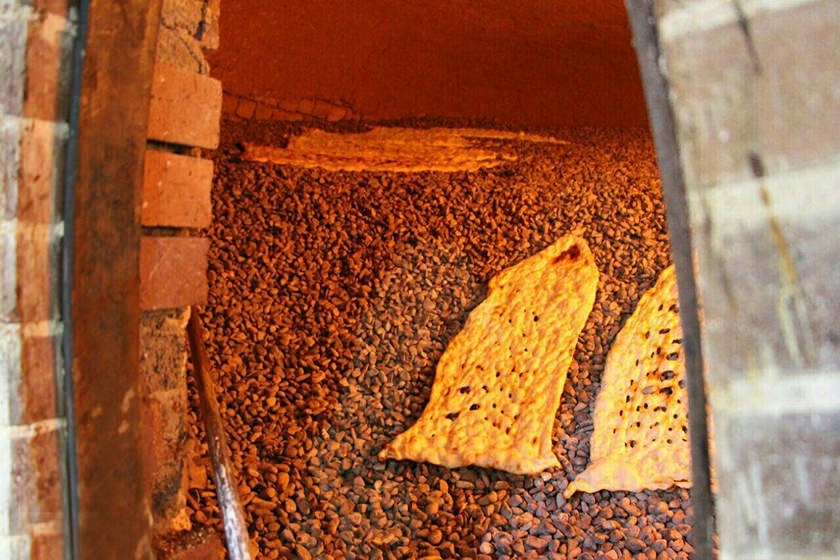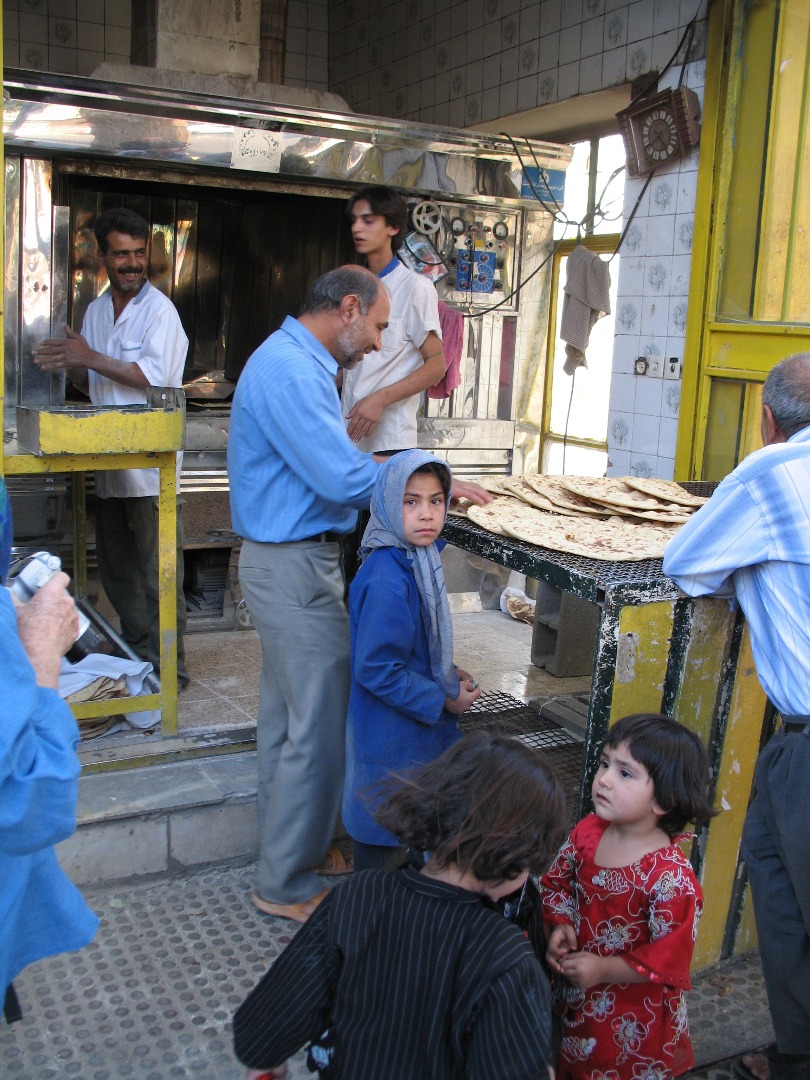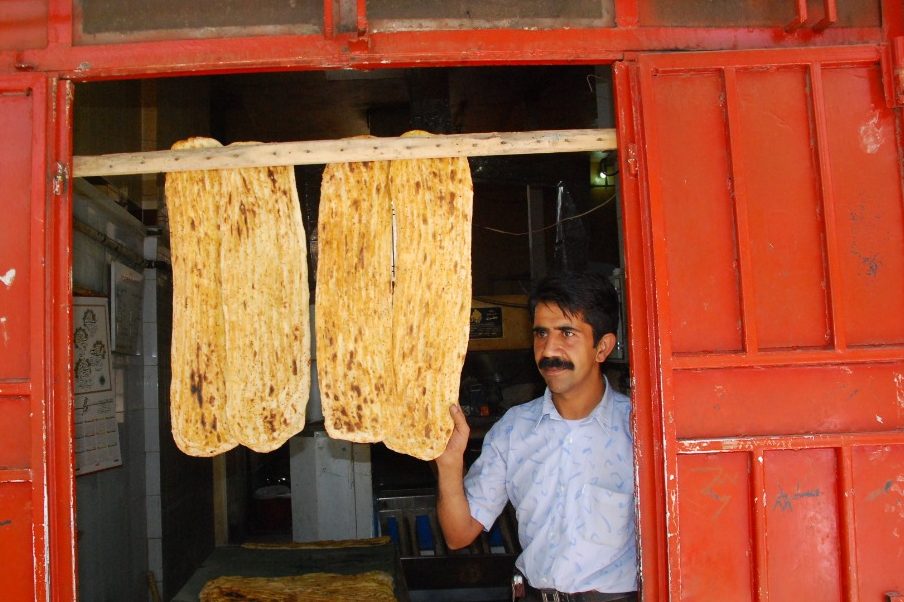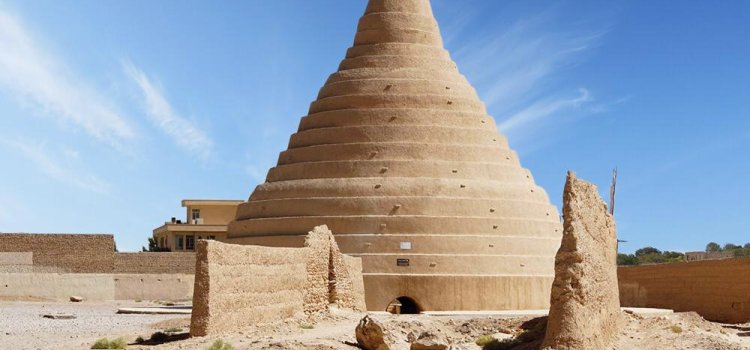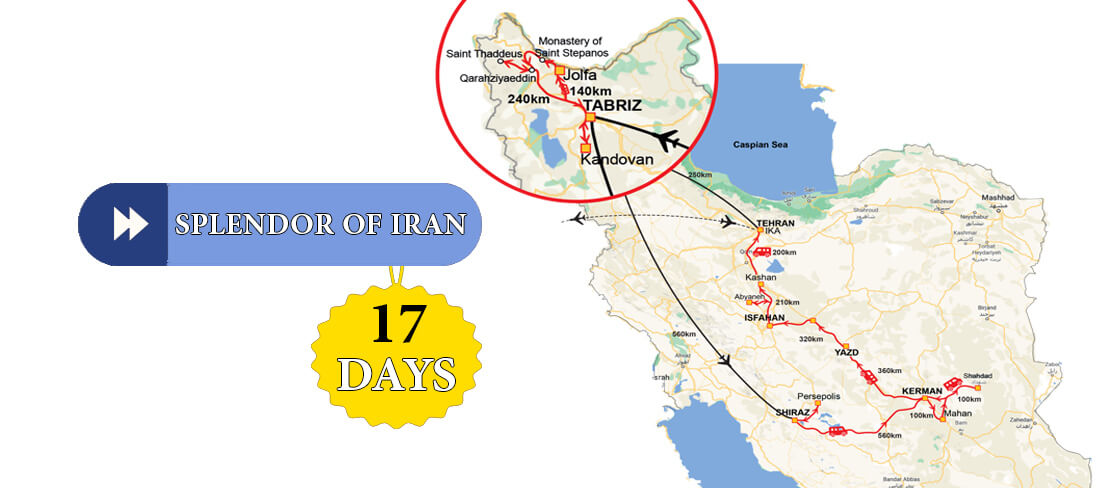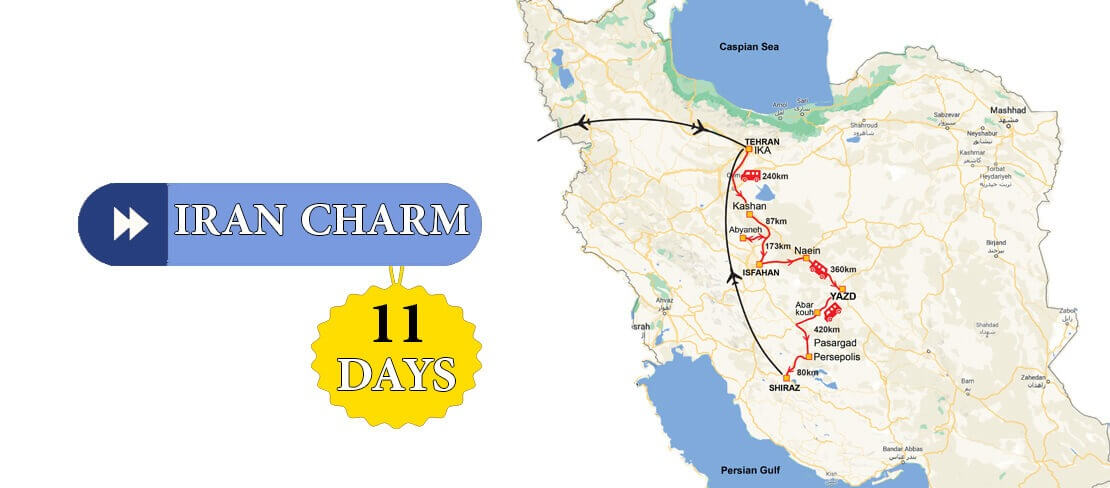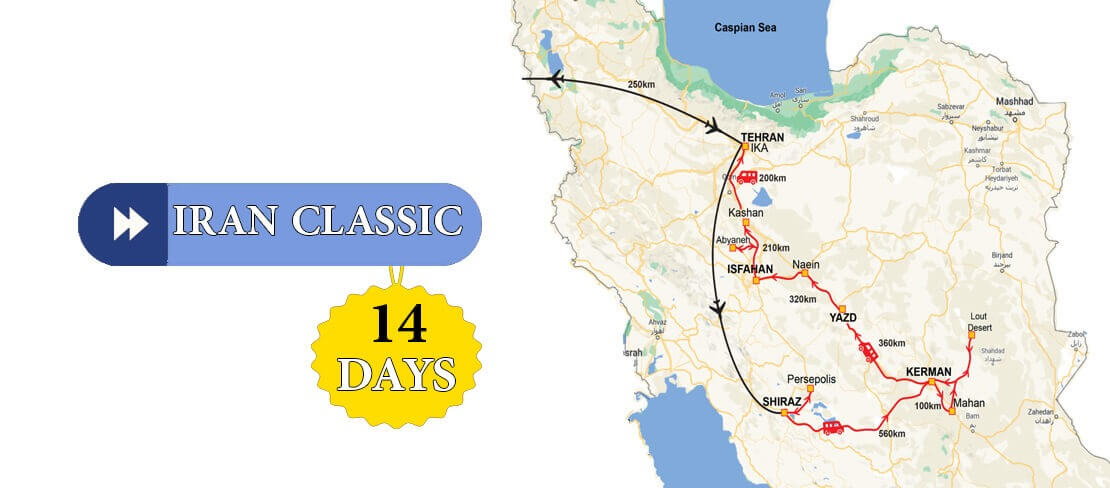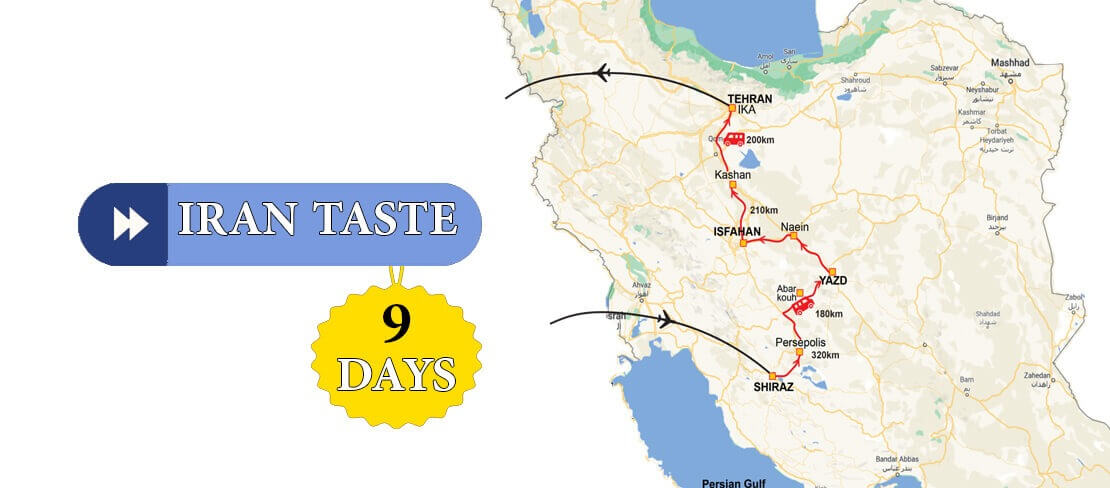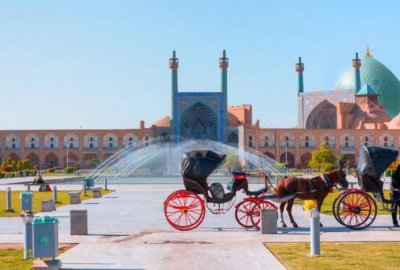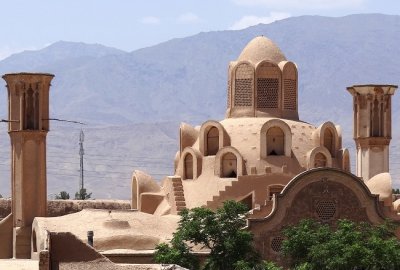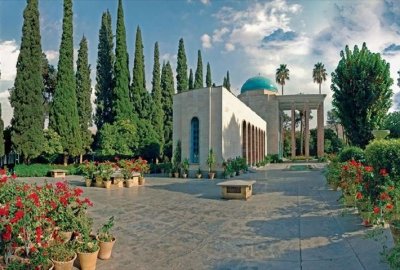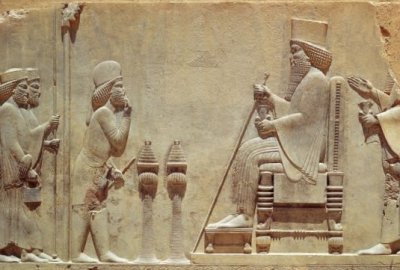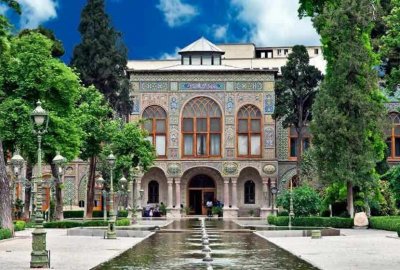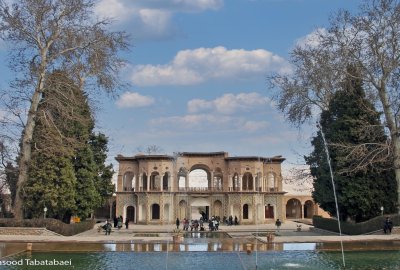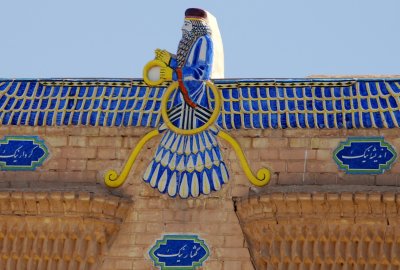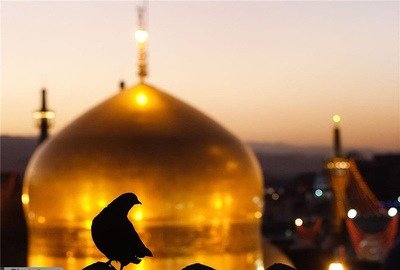Qeysarie Bazaar
Qeysarie Bazaar, also known as the Royal Bazaar or the Grand Bazaar of Isfahan, is located on the northern side of the Naghsh-e Jahan Square.
Qeysarie Bazaar, The Grand Bazaar of Isfahan
Qeysarie Bazaar, also known as the Royal Bazaar or the Grand Bazaar of Isfahan, is located on the northern side of the Naghsh-e Jahan Square. It is one of the first constructions built in the Naghsh-e Jahan Square, completed in 1605 AC.
The majestic entrance of the Qeysaie Bazaar (completed in 1617 AC) is decorated with eye-catching faience mosaic work. The spandrels are decorated with the image of a mythic creature: a being composed of a human head and a tiger body, shooting its dragon tail. Actually, the mythic symbol represents the ninth astrological, known as Sagittarius. Historians believe that Isfahan was founded in the ninth of the year, and that is why it appears on the spandrels at the top of the Qeysarie Gate.
In the middle of the portal, there are three frescos: the one on the west represents Shah Abbas hunting, the one in the middle shows Shah Abbas fighting the Uzbeks and the third one, on the east, demonstrates Europeans in the Safavid court. Below this frescos, there is a window which once was part of a Sharbat-sara (literally “syrup house”), where the king and his guests used to gather to drink and enjoy the eye-catching view of the Naghsh-e Jahan Square. Nowadays, this building has turned into a museum in which you can enjoy the works of modern Iranian artists. Also, it includes a tea-house, on the roof of the Bazaar, where you can sit, order a drink and enjoy the view of the square.
Flanking Qeysarie’s portal, there were two structures called Naqāreh-Khāneh (Timpani House), used to announce the time at dawn and sunset by playing trumpets and also timpani. Of these structures, there is no trace today.
The Qeysarie Bazaar itself includes a large number of roofed lanes, all lined with shops or hojrehs. At special intervals, usually four lanes meet and make a chahār-sūq. These chahār-sūqs are usually covered with a brick dome and function roughly as a crossroad or square, connecting different parts of the Qeysarie Bazaar together.
In addition to the main corridors, Qeysarie Bazaar is marked by different Saraas, Timchehs and Caravanserais which mostly hold workshops, storehouses and offices of some Bazaaris or merchants working in the bazaar. We strongly advise you to visit Timche Malek, a lavishly decorated Qajar-era building in the Bazaar.
All in all, the Qeysarie Bazaar makes an attraction which every traveler coming to Isfahan should make sure to visit. It is one of the biggest and most splendid bazaars in Iran, providing you with all types of Iran’s souvenirs. As you cross one lane, the fragrance of high-quality spices revitalizes your soul; another lane invites you to feast your eyes on the colorful designs of world-quality carpets; and in other lanes you will come across such beautiful handicrafts the examples of which you cannot find anywhere else in the world. Most important of all, the Qeysarie Bazaar is one of the best places where you can make connections with the local people and immerse yourself in the thousands-year-old culture of Isfahanian people.
Qeysarie Bazaar, also known as the Royal Bazaar or the Grand Bazaar of Isfahan, is located on the northern side of the Naghsh-e Jahan Square.
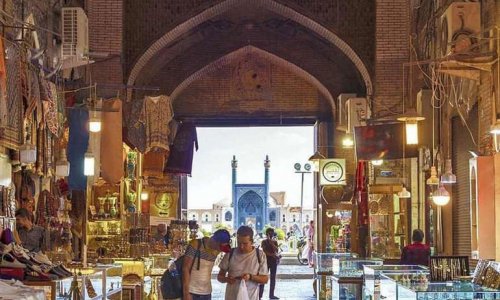
The trading posts of the empires in antiquity
“The Babylonians, now Iraqis, bought pigments, iron, copper, tin and wine from Asia Minor, today’s Turkey.
They also bought alum from Egypt and Syria to color wool and make glass.
The trading posts of the empires in antiquity
“The Babylonians, now Iraqis, bought pigments, iron, copper, tin and wine from Asia Minor, today’s Turkey.
They also bought alum from Egypt and Syria to color wool and make glass.
“Egypt exported luxury goods, in gold, ivory and ebony.
📍Syria and Phenicia which corresponds to Lebanon, exported cedar wood and glass objects.
📍The Sogdians, now known as Uzbeques, and Bactria, part of present-day Afghanistan, traded in lapis lazuli, and Choresmia, located in northeastern Iran, sold turquoise.
Gold, ivory and aromatic oils came from India and olive oil, wine and ceramics from Greece.
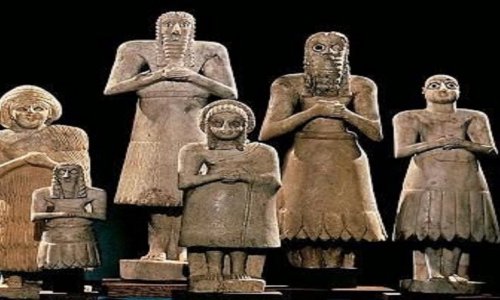
Persia and Bitcoin
The famous cryptocurrency is on the rise in Iran.
At a time when the giants of international finance are speaking out to warn of the risks and volatility of cryptocurrencies
Persia and Bitcoin
The famous cryptocurrency is on the rise in Iran. At a time when the giants of international finance are speaking out to warn of the risks and volatility of cryptocurrencies, Bitcoin is being validated as collateral in Iranian marriage contracts in place of bullion and cash. This shows how well it is integrated into the country’s financial system.
According to Bitooda, a digital currency research firm, Iran is the third country in the world for Bitcoin mining, after China and America.
Nearly 2 million of this currency, the most famous currency used in the digital currency market, has been mined and deposited in Iranians’ “wallets”, virtual wallets.
Iran, one of the most economically sanctioned countries in the world, has seized the opportunity of cryptocurrencies to circumvent the economic blockade. And Iranian youth, hit hard by unemployment, have found a possible source of income and daily occupation.
Since 2014, Bitcoin has gradually entered unofficial transactions, a choice for thousands of families
Iranian women wanting to send money to their children living abroad, or it is used for some kind of business transaction.
Mining farms have sprung up in the country, illegally imported mining devices are installed in old factories and disused garages. A further consequence of the sanctions crippling the Iranian economy.
Industry, the flagship of the economy for a while, replaced by modern factories fed by the virtual.
It was in these most remote places, in apartment rooms, or under the banisters that the first Bitcoins were generated.
Since 2015 these “farms” have been expanding more and more to barter cheap electricity in exchange for an encrypted code ready to be cashed with a single swipe of a finger.
A whole new market has emerged, from traffickers of “mining devices” to electrical technicians, to cable vendors and appliance repairers. A parallel network, an underground economy, having started autonomously and wildly, escaping government control.
The old dream of the treasure hunter has just come true and the “mining devices” are running at full speed to exploit their devices and decrypt the maximum number of valid blocks and thus pocket the jackpot.
Deep in the Iranian soul lies an intuition for scenting out opportunities and getting rich or fattening one’s heritage. They were able to take advantage of the depths of the oil wells. The Iranian people easily engage in risky businesses, such as tightrope walkers. The Iranian economy suffers from permanent inflation since the revolution, derived from international economic sanctions, and speculation is a second job for almost all Iranians, an example is: the frenzy of pyramid systems of all kinds that have pulverized the savings of many families in the 2010s.
Bitcoin is well established and present in the lives of Iranians at the most contested moment in its history. They ride this wave while waiting to see better days …
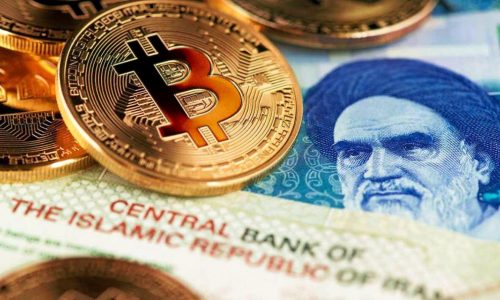
Bazaar
Stalls and shops lined up forming a spine, the economic center of cities in the Middle East. this has been called bazaar, since the dawn of time.
Bazaar
Stalls and shops lined up forming a spine, the economic center of cities in the Middle East. this has been called bazaar, since the dawn of time
A covered market, with a thousand and one entrances and alleys, airy and lighted. A setting that holds madrassas, caravanserais, schools and hammams. As it used to be a city inside a city.
A corridor where inhabitants meet, both merchants and customers.
A store, goods, there is as much food as diamonds.
Side by side, bakeries beside jewelry stores, each one to his own business,expertise and customers.
It wraps around the time and sets its course according to the currents and the surrounding environment..
The heirs are named after the parents, and the previous ones are remembered with nostalgia.
The bazaar has thousands of secrets and offers a chance to all beginners, with or without experience and money.
Don’t be surprised by the number of stalls, no competition problem, they all earn as the Omnipotent promises
History of Coffee in Iran
The history of coffee in Iran dates back to the Safavid period of the 17th century, probably a tradition borrowed from the Ottomans.
History of Coffee in Iran
The history of coffee in Iran dates back to the Safavid period of the 17th century, probably a tradition borrowed from the Ottomans.
Drinking coffee seems to have been a popular habit among Iranians before tea plants were introduced and cultivated in Iran in the 19th century.
The cultivation of tea, especially in the northern regions of the country, has gradually led to the replacement of coffee. Perhaps the subtle, sweet taste of local production has won the favor of consumers over the bitterness of the expensive importation of coffee.
The old Kahveh-Khaneh, literally coffee houses, while keeping their name, now serve tea.
The traces of coffee are still to some extent preserved in some communities such as the Armenians. Likewise, certain customs continue to exist, such as offering coffee powder at funerals to share the feeling of bitterness felt during the loss of a loved one with the family of the deceased.
After the Islamic revolution, a long list of prohibitions imposed themselves on the menu of Iranian pleasures. Alcoholic beverages and narcotics such as opium are banned; coffee, although suspect in the eyes of fanatics, escapes them and is favored by it.
Iranians have always appreciated the taste of bitterness, to such an extent that in the popular language, opium, medicine for all ailments and sorrows was called “talkhi” literally bitterness, which explains the keen interest of former consumers. of opiates for coffee in Iran.
It was not until the end of the Iran-Iraq war for a relative opening of the market and the improvement of the country’s economy in order to allow Iranians to go further in the world of flavors and gustatory pleasures, once liberated. worries of war.
Coffee and its accessories find their place among imported luxury items and “Farang” souvenirs. Iranians attribute this term to everything that comes from the West in general, it is the Iranian version of the word France.
Drinking coffee is therefore timidly done in intellectual and artistic circles looking for an ally to face intellectual rather than physical fatigue, a subject of rivalry against its infused adversary, tea.
But this time, the coffee is no longer initiated in the old Kahveh-Khaneh where it was deposed a century before.
These coffee houses have given way to a novelty: the cofee-shop. A relaxed atmosphere with modern or muted decor, background music, this is where you have to pay relatively dearly for cups of this beverage, drunk by the finesse of candle light.
An ideal refuge for young singles, away from the suspicious eyes of the street to meet and discuss the thousand and one ways to drink coffee, or other things …
The reopening of Iran’s borders after the war to foreign travelers, their strong demand for coffee consumption could be a factor in the development of trade in this seed, especially in restaurants and hotels.
Gradually, players in the coffee industry are starting to learn about this product and following increasing public demand, start importing coffee beans from Brazil and other producing countries. Instead of importing the expensive European brands, local brands appear and the roasting machines are activated imitating the European model.
The Iranian palate has a preference for Robusta and Arabica flavors, and Italian espresso brands are very popular.
Filter coffee, say the third generation of coffee, is increasingly popular with those looking for more flavor and simpler preparation.
Various exhibitions are held every year in Iran, an opportunity to keep up to date with the latest trends and current events in the coffee industry.
Today, coffee has definitely found its place in the menu of pleasures as well as in the hearts of Iranians, so much so that its bitter taste has nothing to envy to the popularity of the sweetness of tea!

Bread, the iranian staple food
For thousands of years, wheat bread has been the staple food of people living in the Iranian plateau.
Despite the introduction of several new food ingredients, it still is the most abundant food on the table and accounts, on average, for 70% of daily caloric intake.
Bread, the iranian staple food
For thousands of years, wheat bread has been the staple food of people living in the Iranian plateau. Despite the introduction of several new food ingredients, it still is the most abundant food on the table and accounts, on average, for 70% of daily caloric intake. This is why Iranians consider bread as god’s blessing and wasting it is quite unacceptable.
Generally, there are two major baking methods: oven or tray. The former is mostly used in cities and villages and the latter among nomads.
There are four main types of bread in the cities: Taftan, Lavash, Sangak, and Barbari. The first two are thin and flatbread and are the most consumed within Iranian Society due to their more reasonable prices. But if you are looking for the most popular, you should ask for Sangak. The leavened dough is made from specially milled flour. It is baked in an oven consisting of a sloping brick shelf covered with red-hot pebbles (literary means Sangak), which leave their imprints on the bread. You can also ask for sesame, nigella seeds, or herbs to be added to the dough before baking, for an extra amount of money.
Don’t forget to remove the left pebbles and cool the bread before putting it inside a plastic bag. read more about Nan
Where to find the ice in summer
Ice dump in Kerman is a conical structure made out of straw and clay which covers a big hemisphere reservoir dug in the ground.
It was a place for preserving the ice.
Where to find the ice in summer?
Ice house is a conical structure made out of straw and clay which covers a big hemisphere reservoir dug in the ground. we find it usually in iran in desert cities as well as Kerman and Yazd. It was a place for preserving the ice. There are some big shallow ponds and high walls near the ice dump to make the ice on winter nights. Every night water was poured into the pond and at night it turned into ice. The ice was taken into the reservoir and a stash of straw was placed between the layers to isolate it. The reason that they made the structure like a cone is because of preventing the heat from entering the ice dump. After filling up the Ice dump, they keep it close until summer and after that, they brought the ice to the city to sell it; in the ceremonies, they use the ice for making the syrup and cold water for the guests, a real refreshing beverage.

